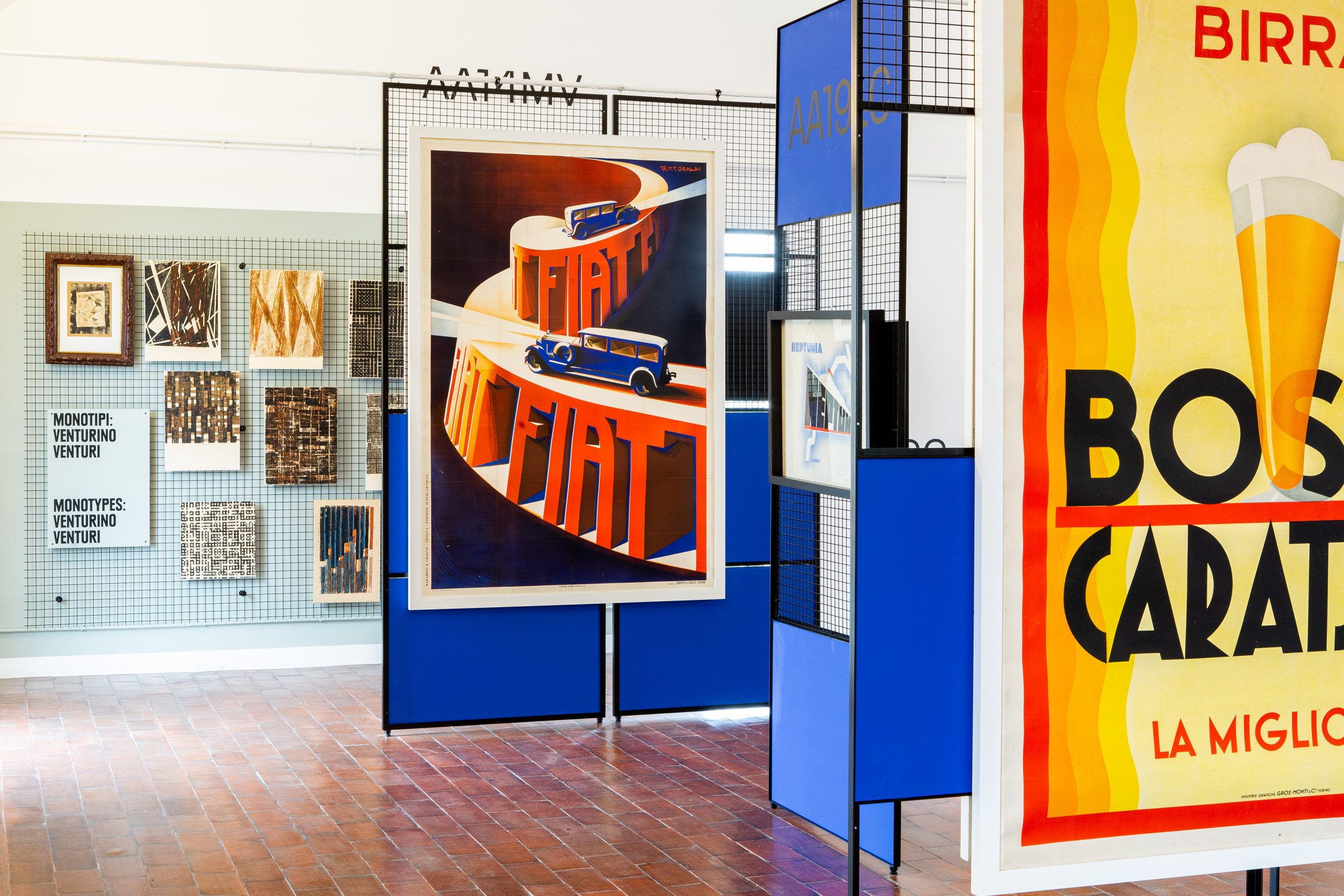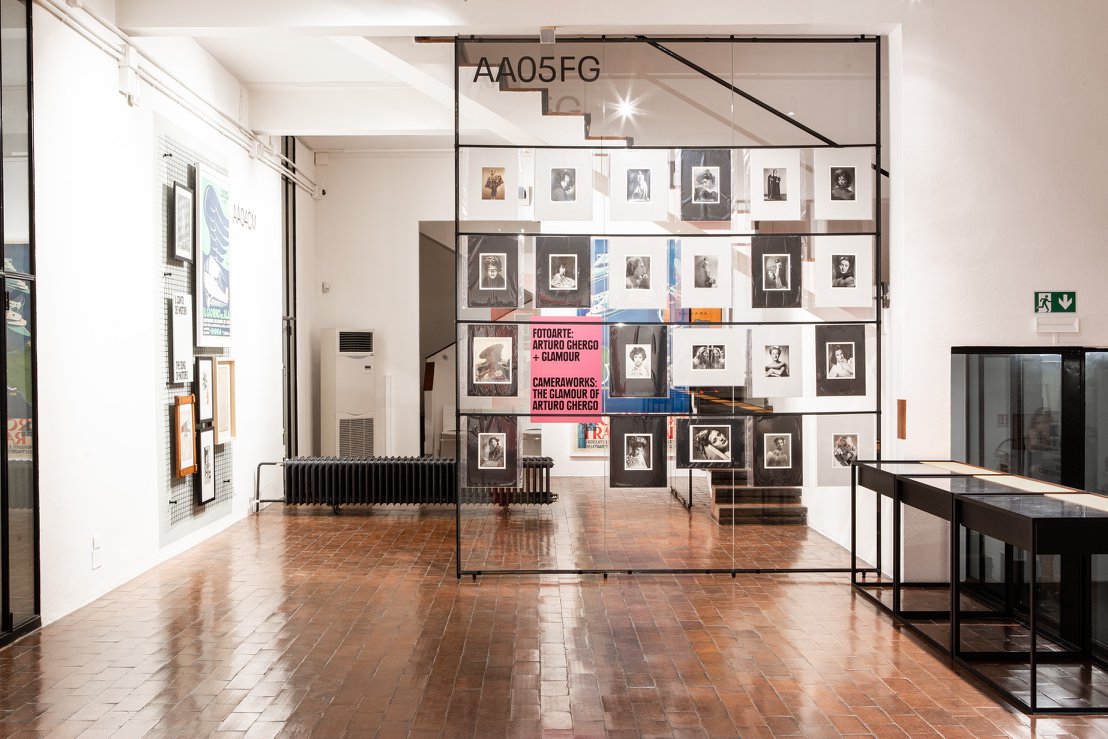L’archivio animato – Lavori in corso // Work in Progress. An Animated Archive opened at the Fondazione Massimo e Sonia Cirulli in Bologna, Italy on November 23, 2019 and will run until May 17, 2020. I developed the concept for this somewhat anomalous exhibition and served as a consultant during the curatorial process; my long-time collaborator, Daniele Ledda (the founder of xycomm, Milan), did the design work.
Rather than following conventional museological models, the exhibition transforms the splendid home of the Foundation (designed for Dino Gavina in 1960 by the Castiglioni brothers) into a laboratory that serves at once as an exhibition space and as a living archive. The goal is to privilege multiplicity, simultaneity, and nimbleness through recourse to exhibition formats that are hybrid, fresh, and playful in keeping with contemporary as well as Futurist values. (The Foundation’s collection is especially rich in works from all periods of the Futurist movement).
The Foundation’s holdings include everything from artistic masterpieces to commercial graphics, works of industrial design, and objects documenting Italy’s material culture. They encompass just about every known form of cultural expression: photographs, drawings, paintings, sculptures, manifestos, textiles, magazines, and books. The show’s protagonist is the diversity of these materials. Instead of presenting tidily packaged grand solutions or narratives, the exhibition’s aim is to open up questions, to experiment, to provide access to little known resources that document the history of the Italian twentieth century in all of its complexity, multiplicity, and completeness. Fragments of larger tales concerned with some of the century’s leading creative figures, like Bruno Munari, thus find themselves in the company of a suite of micro-exhibitions, some of brief duration and succeeding one another quickly, on such topics as advertising, packaging design, and photojournalism in the Emilia-Romagna region during the 1970s. There are 19 initial sections in all including subsections devoted to hitherto unknown textile designs developed for the Triennale di Milano by a who’s-who of 1960s Italian artists and industrial designers. There’s even a mini-exhibition of confectionary wrapping papers whose bold geometries are the work of anonymous commercial artists. The show is organized like a warehouse, complete with SKU numbers (for purposes of tracking the future development of the objects and argument).
While I firmly believe in the value of exhibitions as spatialized forms of scholarly-critical argument and storytelling, the second half of the 20th century has burdened us with models and formats that are so costly, slow, slick, and professionalized that they can end up standing in the way of reconnecting vast collections languishing in storage to the everyday hum of contemporary cultural conversation. New formats are required if the constant chatter about the need to activate and animate cultural heritage is to amount to more than mere chatter: formats that present problems (not just solutions), processes (not just products), and at paces from the ultraslow to the “at-the-drop-of-the-hat.”
Let’s make a wild guess: namely, that something like 95% of the cultural heritage of humankind is in deep storage. Maybe it’s far more, maybe it’s far less. But that cultural heritage is sure to languish and remain little more than a passive reserve if institutions don’t have the courage to devise agile and engaging new exhibition practices that allow for collections to circulate with greater frequency, ease, and energy. I don’t believe that the problem lies with audiences today. Visitors are enraptured by museum storage facilities when they are invited backstage. I’ve never seen them less than intrigued by opportunities to observe or participate in everything from art restoration to curatorial practice to the resolution of research puzzles. The problem lies with certain inherited expressions of the culture of conservation-at-all-costs that have become deeply sedimented in our major cultural institutions. A few young upstarts, the Fondazione Cirulli among them, have shown the courage to break with convention and undertake such experiments. However modest, L’archivio animato – Lavori in corso // Work in Progress. An Animated Archive is one of them.
The exhibition has been widely reviewed in the art press, including a recent essay by Cristina Moro in Domus (Dec. 13, 2020) that attends not just to the show but also to the building’s history as Dino Gavina’s showroom.














